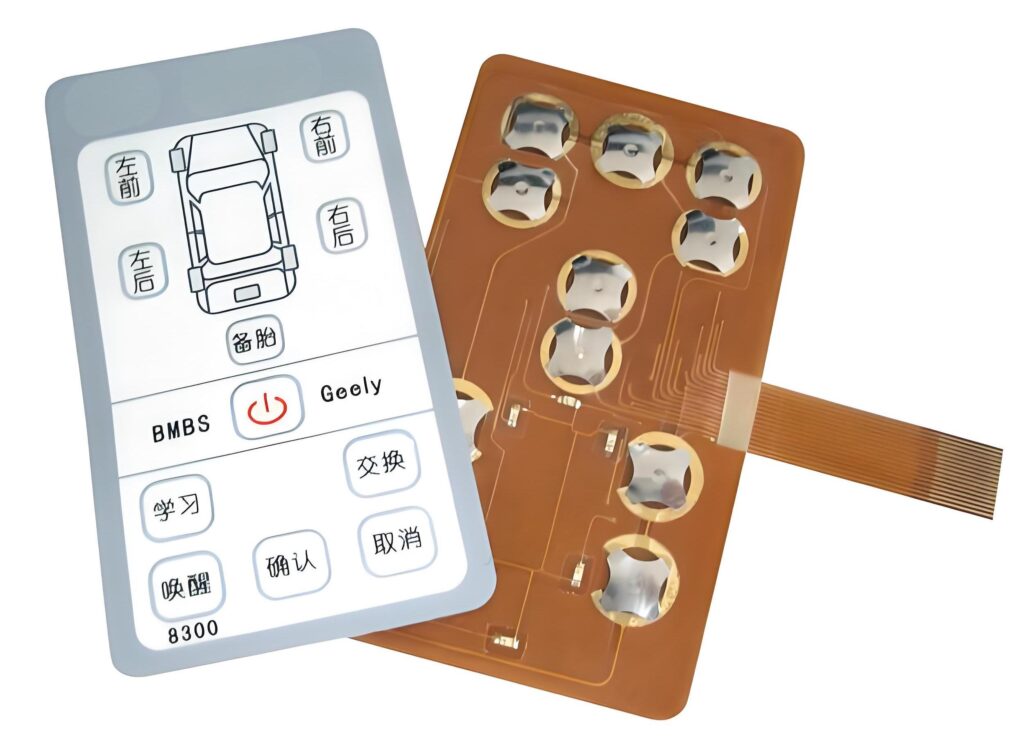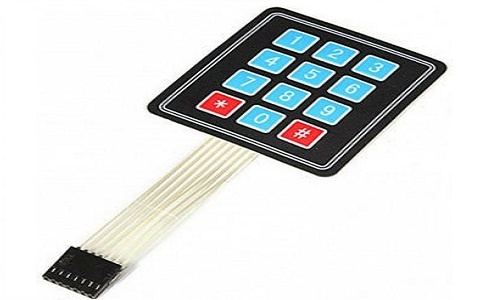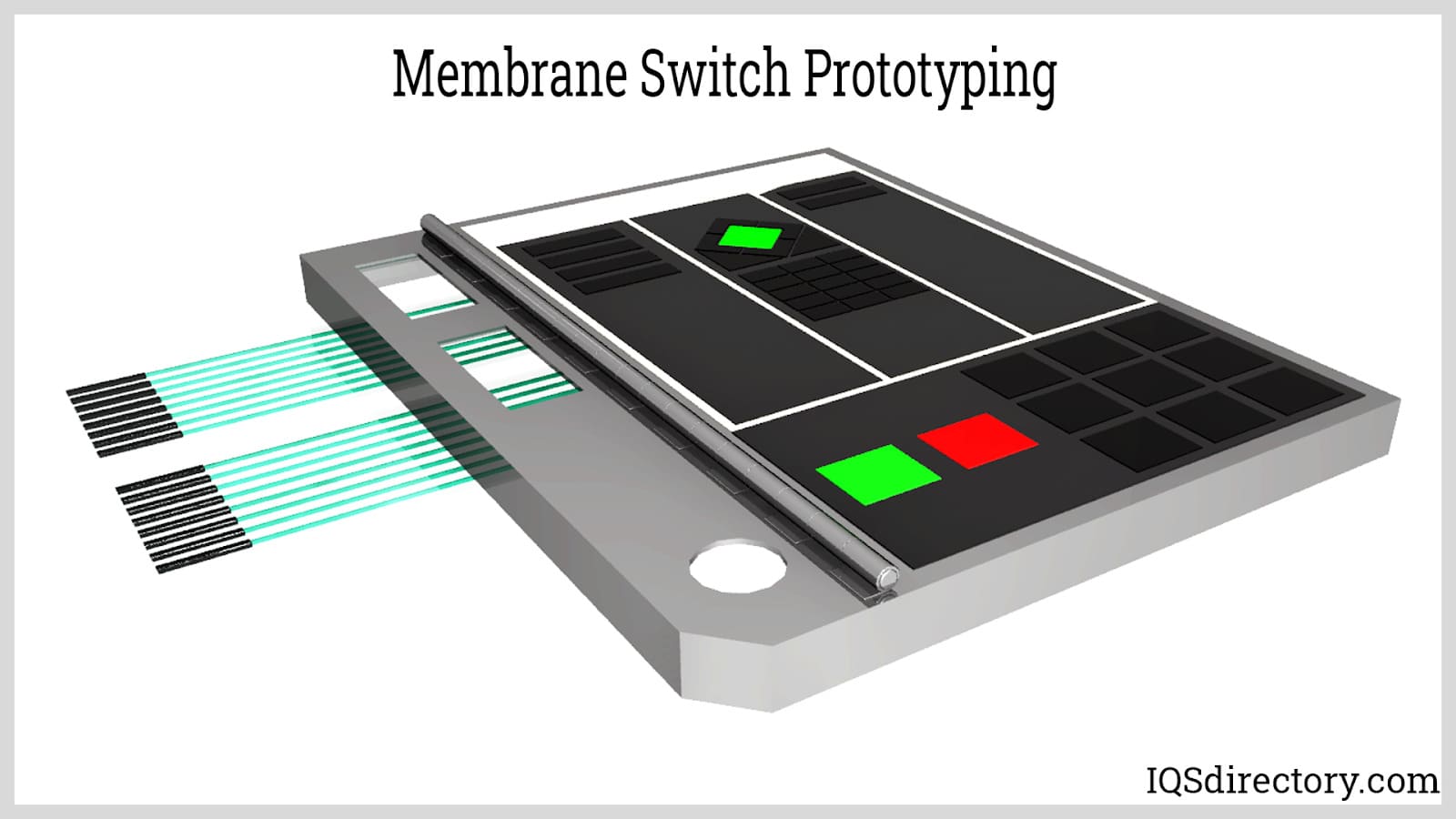The Manufacturing Refine Behind Membrane Layer Switch Over: What You Need to Know
The production process behind membrane changes combines mindful layout, material selection, and quality assurance. It starts with understanding the ins and outs of membrane button layout and progresses through different stages, consisting of material selections and printing methods. Each stage plays a crucial role in ensuring functionality and longevity. Nonetheless, the intricacies of layer construction and the rigorous screening standards may expose understandings that are not promptly apparent. What lies beyond these foundational aspects?
Understanding Membrane Change Design
Membrane buttons might show up basic at first glance, their style includes intricate factors to consider that guarantee performance and sturdiness. The style procedure begins with a detailed understanding of user demands, consisting of the user interface's intended application and environmental variables. Ergonomics is an essential component, as the design should facilitate convenience of use while ensuring that responsive feedback fulfills user expectations.Moreover, the layering of parts, such as visuals overlays, adhesive layers, and conductive traces, need to be precisely crafted. membrane switch. This split setup not just influences the switch's responsiveness yet additionally impacts its durability. Interest is given to the sealing techniques employed to secure against moisture and dirt, which can compromise performance. In addition, style factors to consider include appearances, where shade schemes and aesthetic quality boost customer experience. Inevitably, the design of membrane changes balances capability, user experience, and toughness, making certain that they satisfy the needs of numerous applications efficiently
Materials Used in Membrane Layer Switch Manufacturing
When choosing materials for membrane layer button manufacturing, it is necessary to ponder both efficiency and toughness. The primary materials include polyester and polycarbonate movies, which give flexibility and strength. These films are usually covered with sticky to ensure correct bonding to substrates. Conductive inks, normally made up of silver or carbon, are crucial for creating electric connections within the switch, permitting for dependable operation.Additionally, a protective layer, such as a hard layer, is often applied to boost scratch resistance and longevity. The selection of backing product, such as acrylic or foam, can substantially influence the switch's responsive feel and overall individual experience. Numerous environmental factors, consisting of temperature level and moisture, should direct product option to assure peak efficiency in details applications. Eventually, the ideal mix of materials contributes to the membrane switch's functionality and lifespan, making notified selections vital for makers.
The Printing Process: Creating Graphics and Text
The printing procedure in membrane button manufacturing plays a considerable role in creating high-quality graphics and message. Various graphic design strategies are utilized to assure aesthetic appeal and functionality, while mindful ink choice approaches are necessary for sturdiness and efficiency. Comprehending these components is essential for achieving best cause membrane layer switch style.
Graphic Style Techniques
Graphic design strategies play a crucial role in the printing process of membrane buttons, as they specify how graphics and text will inevitably appear on the end product. Effective visuals design entails the tactical use designs, font styles, and shades to improve readability and visual charm. Developers often use vector graphics for scalability, making sure that photos stay sharp at various dimensions. Furthermore, attention to contrast and placement is crucial, as it influences user communication and visual high quality. The consolidation of branding aspects, such as logos, must be taken care of with like keep brand name integrity. Overall, thoughtful visuals layout methods add substantially to the functionality and appearance of membrane buttons, impacting individual experience and item efficiency.
Ink Selection Techniques
Picking the ideal ink is crucial for achieving the preferred aesthetic quality and toughness in membrane button manufacturing. Numerous ink kinds are used, consisting of solvent-based, water-based, and UV-curable inks. Each type offers distinct characteristics, such as versatility, resistance, and bond to ecological aspects. Solvent-based inks are usually favored for their resilience and vibrant shades, while water-based inks are extra eco-friendly yet may have restrictions in adhesion. UV-curable inks offer quick healing and durable efficiency. In addition, color matching methods guarantee that the chosen inks line up with style specs. Eventually, the choice of ink should take into consideration elements such as application approach, substratum compatibility, and end-use requirements to accomplish premium lead to membrane button graphics and message.
Layer Construction and Assembly

Material Option Process
A cautious selection of materials is essential in the manufacturing procedure of membrane buttons, as it straight influences performance and resilience. The main materials made use of include polyester, polycarbonate, and various conductive inks. Polyester is usually preferred for its excellent resistance to chemicals and abrasion, making it suitable for severe atmospheres. Polycarbonate, on the various other hand, gives exceptional clarity and influence resistance, which is beneficial for applications requiring exposure and robustness. Conductive inks, typically made up of silver or carbon, are essential for developing reputable electric pathways. Additionally, the choice of sticky materials influences the total integrity of the button - membrane switch. Examining variables such as ecological exposure, tactile feedback, and visual requirements guides manufacturers in choosing the most effective products for their particular applications
Layer Adhesion Techniques
Adhering layers in membrane layer button building is an essential procedure that assures capability and long life. Various bond strategies are employed to safeguard perfect bonding between layers, which commonly include the use of adhesives, warmth, and pressure. Pressure-sensitive adhesives (PSAs) are frequently utilized for their convenience of application and instant bonding capacities. Furthermore, thermal bonding methods can be used, where heat is go to this website made use of to turn on adhesive properties, protecting a solid bond. The option of adhesion approach mostly depends on the products involved and the specific application needs of the membrane button. Proper positioning and consistent application of adhesives are vital to prevent problems, safeguarding the switch runs efficiently throughout its designated life-span.
Quality Assurance Actions
Assuring high quality control throughout the layer building and assembly of membrane layer buttons is vital for preserving efficiency and reliability. This procedure generally entails numerous vital actions, including extensive inspections at each stage of production. Suppliers utilize advanced screening techniques, such as peel tests and bond assessments, to validate the integrity of layer bonds. In addition, aesthetic examinations are carried out to identify any type of defects in printing or material disparities. Environmental problems, such as temperature level and moisture, are thoroughly checked to guarantee excellent healing and adhesion. Furthermore, routine calibration of equipment aids keep exact production standards. By carrying out these quality assurance procedures, makers can greatly minimize the danger of product failure, ensuring that the final membrane layer switches over satisfy the needed specifications and consumer expectations.
Checking and Quality Assurance Measures

Developments in Membrane Change Technology
As innovations in technology continue to advance, membrane switches are taking advantage of ingenious developments that enhance their functionality and user experience. One noteworthy development is the combination of capacitive touch modern technology, which permits even more intuitive and responsive interface. This change not only boosts looks however likewise reduces mechanical damage, prolonging the life-span of the switches.Additionally, innovations in visuals overlay materials have led to boosted sturdiness and resistance to ecological elements such as moisture and UV light. These materials currently use enhanced clarity and brightness, additional elevating the visual appeal.Furthermore, the consolidation of clever technology is changing membrane switches into interactive control panels, making it possible for connectivity with IoT devices. This connectivity promotes a seamless individual experience, leading the way for applications in numerous markets, from healthcare to customer electronic devices. Collectively, these innovations setting membrane layer changes Source as critical elements in modern-day tool layout.
Frequently Asked Concerns
How Lengthy Does the Membrane Switch Manufacturing Process Take?
The period of the membrane switch production procedure can differ considerably. Elements such as intricacy, products utilized, and manufacturing quantity influence timelines, with typical production ranging from a couple of days to several weeks for completion.
What Are the Usual Applications for Membrane Buttons?
Membrane buttons are generally made use of in different industries, including auto controls, family appliances, clinical tools, and consumer electronics (membrane switch). Their adaptability and longevity make them excellent for applications requiring straightforward user interfaces and reputable performance in diverse atmospheres
Can Membrane Layer Switches Be Custom-made for Specific Requirements?

What Is the Lifespan of a Typical Membrane Change?
The life expectancy of a normal membrane layer button varies, yet normally, it ranges from 1 to 5 million cycles. Aspects such as usage, atmosphere, and worldly quality substantially influence toughness and total efficiency with time.

Are Membrane Switches Over Environmentally Pleasant?
The environmental friendliness of membrane layer switches over differs. Some products utilized may not be recyclable, while others can be green. The overall effect depends upon producing practices and materials, necessitating careful consideration throughout choice and disposal. The manufacturing process behind membrane layer switches over combines mindful style, product choice, and quality control. It starts with comprehending the ins and outs of membrane switch layout and advances through various stages, consisting of product options and printing methods. When choosing materials for membrane button manufacturing, it is essential to contemplate both link efficiency and sturdiness. A careful choice of products is essential in the manufacturing procedure of membrane switches, as it straight influences functionality and longevity. The option of attachment approach largely depends on the materials entailed and the details application requirements of the membrane button.